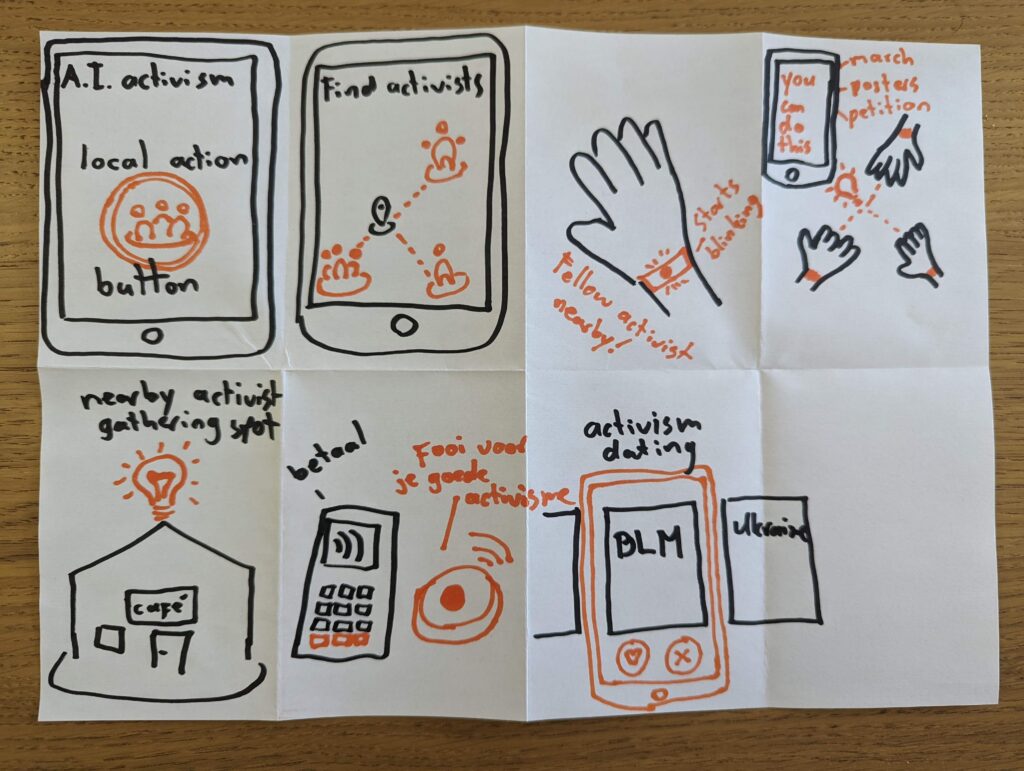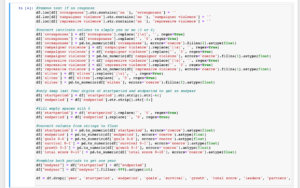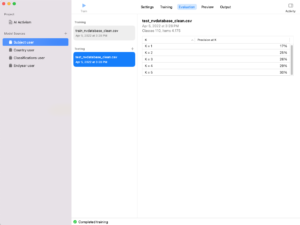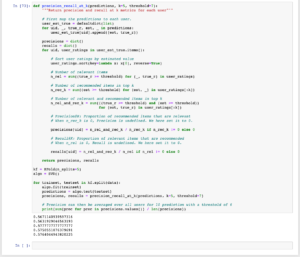Premise
Using machine learning to support decentralized activist movements by providing them with recommendations of actions they can undertake to improve their chances of success.
Preface
Activism used to be filled with charismatic leaders. Names we still recognise today: Martin Luther King, Angela Davis, Malcolm X, Harvey Milk. People to rally around and be the face of a cause to fight for. That is something that seems to have changed. Who leads the Black Lives Matter movement? Who was the face of the Hong Kong protests? Who is in charge of #MeToo? Nobody… and everybody. But, that doesn’t mean the current movements are weaker. There is a case to be made that it even makes them stronger! The decentralization of activism makes the movements elusive and actually gives power to the needs of the people (Brafman & Beckstrom, 2019). Because how do you fight that which has no face? It is the guerrilla version of activism and provides the few with methods to fight the mighty.
The potential downside of decentralization is that internal structures are less clear and accessing the skillsets of individuals that are part of the movement becomes even more difficult. In a field where there is already little known about what makes a movement successful (Joyce, 2014) this leads to a very opaque process where choices are often based on gut feelings instead of evidence. And there lies an opportunity! The goal of this project is to create a service or product that connects local activists with each-other and provides them with recommendations on what methods of action they could undertake to increase their chances of success. This will be done through exploring machine learning based recommendation systems based upon an existing activism database, starting with the ‘Global Nonviolent Action Database’ and learning from the ‘Nonviolent and Violent Campaigns and Outcomes database 2.1’ (Chenoweth & Shay, 2017; Swarthmore College, 2011) and developing a UX prototype.
Prototyping
Iteration 1
Concept
Inspired by ‘The Starfish and the Spider’ (Brafman & Beckstrom, 2019) I’m trying to get a grip on decentralized activism. And one thing sticks with me, decentralization gives more autonomy and power locally. Instead of being dependent on decisions from the top that might not correlate with the local reality, it motivates you to take action yourself. Because you see what is needed and because you are given the autonomy and confidence to do something about it. Or like Brafman (2019) says: “It doesn’t matter how big [a decentralized organization] gets or how much history it has; any portion of the organization can easily mutate at the drop of a hat. Because the arms of the starfish have relative freedom, they can go in a multitude of directions.” This ties in directly with the idea of grassroot movements where the people in a local region or community form the foundation of an organization (Caneparo & Bonavero, 2016). A great example is Bernie Sanders’ presidential campaign; he didn’t have the support of the large corporations and super PAC’s (in fact he was fighting those) so instead of relying on their huge donations and the political leverage these large donors would exert on his tone of voice and policy, he choose to be dependant on the individuals, the people he was fighting for. This resulted in 7 million donations with an average of $27,-. Collecting even more than Obama in 2008 (Hanley, 2017).
That brings us to the concept, the idea should support decentralized activist movements, and empower local clusters. To get the creativity flowing I engaged in a couple of rounds of ‘Crazy 8’s’ (Google, z.d.), with the one shown in fig 1 being the most worthwhile. Leading to the concept: Decentralized AI Activism, supporting grassroots movements.

Prototype
The first prototype doesn’t need to feel real, it is just there to convey the concept and be able to talk about it with potential users. Do they grasp the concept? Does it evoke enthusiasm? This low-fidelity prototype can be seen in figure 2. Some insightful quotes of the test were:
- ‘It is nice to see who is supporting this initiative around me. Can you also create your own initiatives within this action? For example: under #StandWithUkraine, we came up with an action to sell shirts with some old college friends. Can we show that on this map and make it public for people who also want to contribute?’
- ‘The terms of the methods scare me. I get the feeling that I really have to be an expert in that field, even though I can see that I can get more information under more.’

Data & machine learning
The ‘Global Nonviolent Action Database’ or GNAD (Swarthmore College, 2011) is the ideal candidate for the idea since it covers more than 1200 movements worldwide, from large ones that span several countries to the smallest ones that are in just one school or a tiny factory. The GNAD is quite comprehensive and spans everything from the success of the movement, the general conflict situation to the actions these movements undertook based upon the 198 methods of nonviolent action defined by Sharp and Paulson (2005), a case can be seen in figure 3.1. I already scraped this database for the course Fundamentals of machine learning. So it just needs cleaning based upon the requirements for this project, this is done in the development tool Jupyter Notebook with Python as language. The cleaning can be seen in figure 3.2 and 3.3 while figure 3.4 shows a snippet of the end result.
Iteration 2
Prototype
The second iteration of the prototype tries to actually bring the application to life: Starfish, Decentralized AI Activism. This allows for both user and usability testing (Unguess, 2021). The usability test asked the users to fulfill a task: Go to your movements, select Stand with Ukraine and find out more about ‘Mock Awards’. Then go back home. This task was generally executed successfully, though some buttons appeared to be too finicky. Some insightful quotes regarding the second test of the concept were:
- That feeling that you are doing it with local people I don’t see at all anymore. How many people are there?
- You have the “what is this based on?” button but actually you’re more trying to say why it’s so promising, or why this would work well now.

Data & machine learning
Create ML is a no-coding app working on Apple’s Core ML framework and provides a Machine Learning environment that provides the possibility to find out if the database made in iteration 1 works and finetune it (Apple, n.d.). With a 80/20 training/test split the results are promising but not yet amazing. With a precision at k=5 of about 0.3. So ~30% of the recommendations are correct. Too low to be trustworthy. But it is working so let’s take the next iteration to coding so we can see if we can reach more precision by exploring algorithms or adding relevant data to the database.
Iteration 3
Prototype
This last iteration brings several user flows to the prototype and incorporates the feedback and criticism from the previous test. Bring back the feeling of connecting with locals, several ways to reach the same goals and cleaner design patterns (Joyce, 2021). The usability test asks the users to fulfill the following tasks: “Go to Stand with Ukraine and check out a method that looks promising according to the AI. Now go to the methods database and find out if the sit-in action looks promising for Stand with Ukraine. Lastly, go to the Stand with Ukraine chat.”

Data & machine learning
Surprise is a Python scikit that offers a relatively easy way to build and analyze recommender systems that work with rating data (Mavuduru, 2021). Which works for me since the movements of the GNAD database all have a 0-10 rating. A big advantage here over Create ML is that I can implement different algorithms to see which one works best with the data I’ve got. In the end SVD yields the best results with a threshold of 7, precision at k=5 it 0.57. So ~57% of the recommendations are correct, almost double of the 30% that Create ML provided and an actually usable score.
Reflection
For me this project is a proof of concept. It seems possible and worthwhile to apply machine learning in the field of activism. By pouring it in an accessible form (mobile app) it can support local movements by supplying them with data driven information. There is no need to wait for instructions from the top because the arms of the starfish have relative freedom, they can go in a multitude of directions. The model however would need significant improvement, I see opportunities for example to implement Lewis Cross-Culture model (Lubin, 2013) and adding leadership styles (Nanjundeswaraswamy & Swamy D R, 2015).
References
Apple. (n.d.). Core ML – Machine Learning. Apple Developer. Retrieved 3 April 2022, from https://developer.apple.com/machine-learning/core-ml/
Brafman, O., & Beckstrom, R. A. (2006). The Starfish and the Spider. Penguin Group.
Caneparo, L., & Bonavero, F. (2016). Neighbourhood regeneration at the grassroots participation: Incubators’ Co-creative process and system. International Journal of Architectural Research: ArchNet-IJAR, 10(2), 204. https://doi.org/10.26687/archnet-ijar.v10i2.960
Chenoweth, E., & Shay, C.W. (2017). Updating Nonviolent Campaigns: Introducing NAVCO 2.1.
Google. (z.d.). Crazy 8’s – Core Method. Design Sprint Kit. Retrieved 28 March 2022, from https://designsprintkit.withgoogle.com/methodology/phase3-sketch/crazy-8s
Hanley, B. (2017, December 7). Bernie Sanders Received More Individual Campaign Contributions Than Obama’s Entire 2008 Campaign. HuffPost. Retrieved 4 April 2022, from https://www.huffpost.com/entry/bernie-sanders-has-alread_b_9671406
Joyce, A. (2021, December 5). Design-Pattern Guidelines: Study Guide. Nielsen Norman Group. Retrieved 1 April 2022, from https://www.nngroup.com/articles/design-pattern-guidelines/
Joyce, M. (2014). Activism Success: A Concept Explication. University of Washington. https://digital.lib.washington.edu/researchworks/handle/1773/26455
Lubin, G. (2013, September 6). The Lewis Model. Business Insider. Retrieved 5 April 2022, from https://www.businessinsider.com/the-lewis-model-2013-9?international=true&r=US&IR=T
Mavuduru, A. (2021, December 25). Building recommender systems with Surprise. Towards Data Science. Retrieved 29 March 2022, from https://towardsdatascience.com/how-you-can-build-simple-recommender-systems-with-surprise-b0d32a8e4802
Nanjundeswaraswamy, T. S., & Swamy D R, D. (2015). Leadership styles and quality of work life in SMEs. Management Science Letters, 5(1), 65–78. https://doi.org/10.5267/j.msl.2014.12.006
Sharp, G., & Paulson, J. (2005). i(1st ed.). Adfo Books.
Unguess. (2021, July 6). User Testing & Usability Testing: what are the differences? Unguess.Io. Retrieved 2 April 2022, from https://blog.unguess.io/en/differences-between-user-testing-and-usability-testing
Swarthmore College. (2011). About the Database. Global Nonviolent Action Database. Retrieved 18 March 2022, from https://nvdatabase.swarthmore.edu/content/about-database








